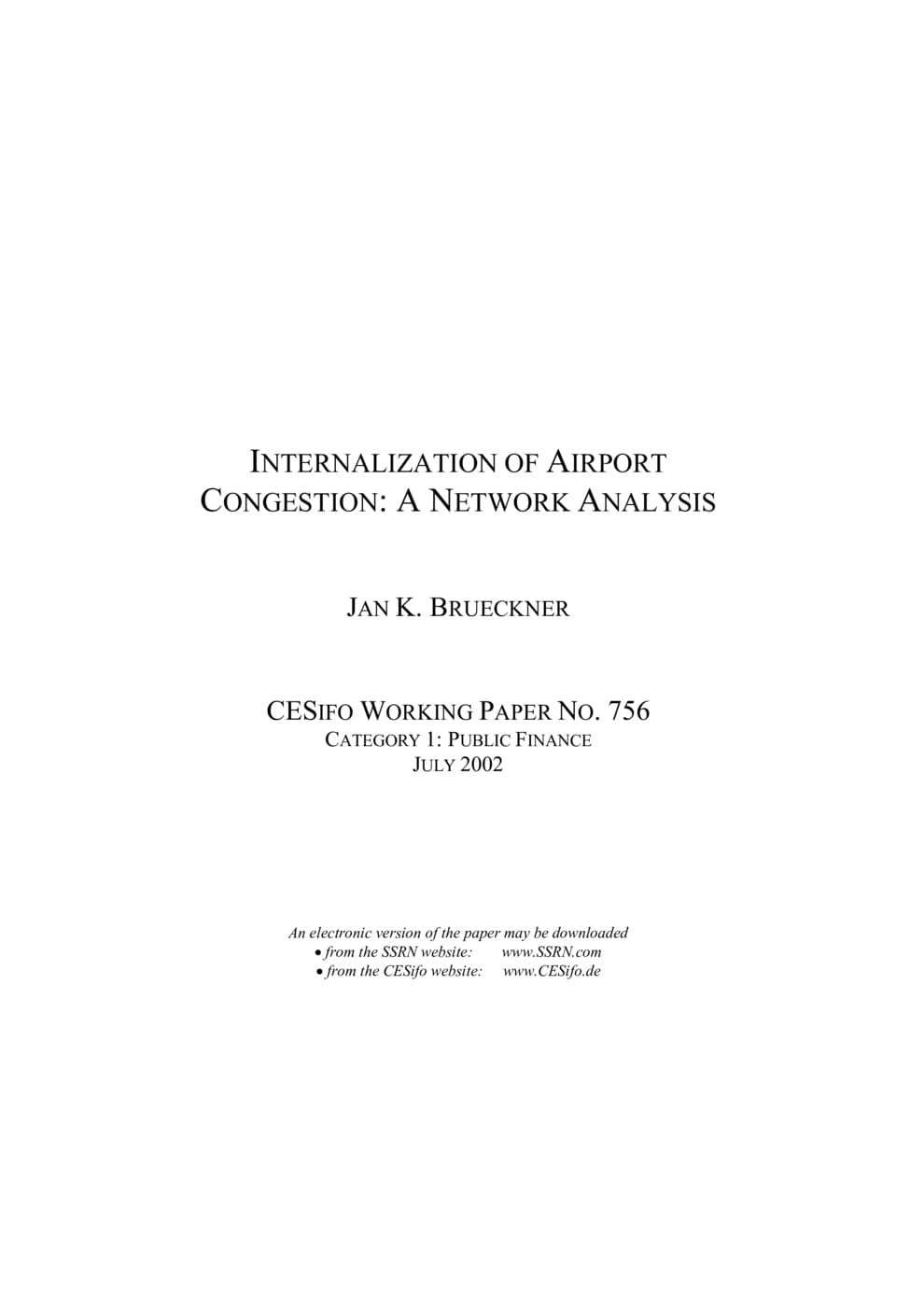Internalization of Airport Congestion: A Network Analysis
CESifo, Munich, 2002
CESifo Working Paper No. 756

The likely resurgence of air traffic in the U.S. means that airport congestion is a problem that must soon be confronted by policy makers. As part of their policy response, it is probable that some form of congestion pricing will be imposed at selected U.S. airports in the relatively near future. The theory developed in this paper, which extends the results of Brueckner (2002), provides an important guide for the formulation of congestion pricing rules. In particular, the theory says that the congestion tolls levied on the various airlines at a particular airport should generally be different, with the tolls being inversely related to a carrier’s airport flight share. Internalization of airport congestion is the reason for this inverse relationship. In operating another peak flight, a carrier takes account of the congestion damage imposed on the other flights it operates. If these flights account for a large share of the airport’s traffic, then most of the congestion created by the additional flight is internalized, justifying a low toll. By contrast, if the carrier operates only a few of the airport’s flights, then little internalization occurs, and a high toll is needed to force the carrier to take into account the congestion damage it causes. The resulting flight-share rule is easy to implement, and it could help policymakers design proper toll systems at U.S. airports.